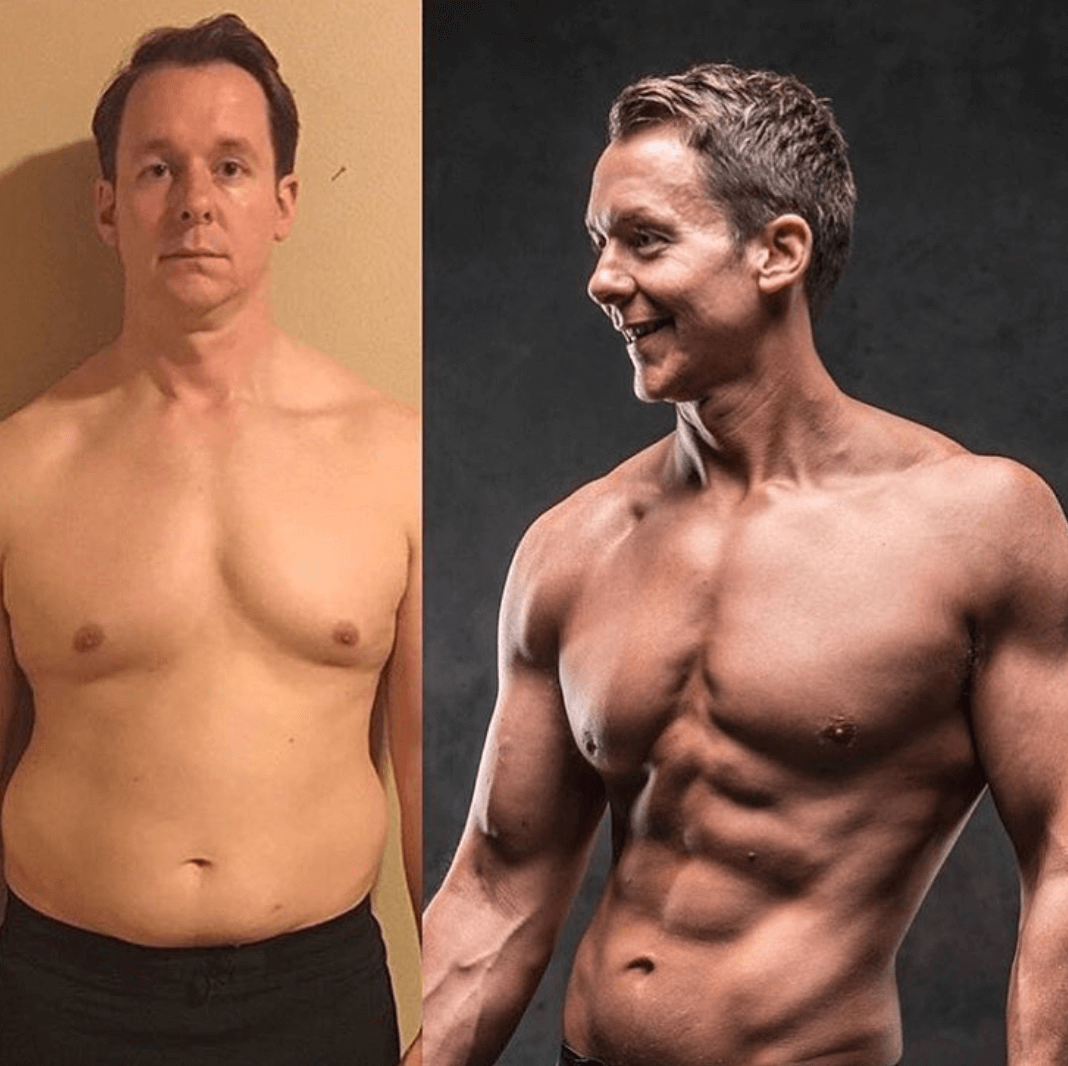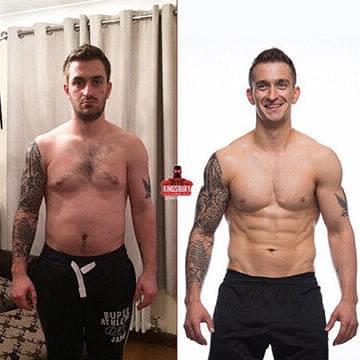The Principles Of ‘FITT’
We’re a generation of people who either want to get fit, or stay fit. It’s a brilliant feeling. There are so many health benefits to feeling and looking good, and you’ll find a multitude of people out there willing to tell you how to do exactly that. Some work, some don’t. There are also many ways to achieve your goal. With so many crazy diets and ritualistic workouts, it’s hard to know which one is for you. Chances are few of them will be, but one of the most successful is to follow the F.I.T.T. principle.

The F.I.T.T. method isn’t trying to make you something you’re not. It’s not a fad diet or a ‘promise-you-the-world’ workout. It’s simply designed to guide the development of custom fitness plans and build a workout plan around you that really works. As well as being a perfectly named acronym, the F.I.T.T. principle stands for Frequency, Intensity, Time and Type. It breaks down like this:
- Frequency describes how often you exercise.
- Intensity is how strenuous your workout will be.
- Type details what kind of exercises you’re going to do.
- Time is focussed on how long your workout will last.
Because F.I.T.T. is built around you and your unique, individual targets, it matches your experience and your fitness levels. We’re all different, so we all have different levels of fitness and goals we want to achieve. Depending on what you are exercising for, whether that’s a marathon, weight loss, muscle gain or toning, the principles behind F.I.T.T. will still work for you.
If you’re wanting to give the F.I.T.T. method a try, the first thing you’ve got to do is ask yourself some questions. I can’t give you those answers, but I can give you the questions.
- Firstly, ask yourself what your current fitness level is. Are you a beginner? Are you intermediate or are you an advanced gym user. Be honest.
- The next question is what you want to achieve over the next 6, 9 or 12 months. Are you, for example, looking for increased muscle? Increasing your endurance levels? Weight loss? Whatever it is, only you’ll know.
- Finally, how many times will be you be able to train? It’s easy to tell yourself you’re going to go to the gym every day, but that’s not necessary or achievable for most of us.
What’s The Right Frequency?
Lots of people ask me how often they should work out, and there isn’t one answer. When you’ve done any form of exercise, your body needs time to rebuild and repair. Your energy needs to be replenished and your muscles need to adapt to the demands you place on them, so they’re stronger next time. The more you exercise, the less time they have to do this, so there’s a balance to be found.
To use F.I.T.T., you’ll need the answer to the second question from earlier. You know, the one about what you want to achieve! If you’re going for cardio exercise for fitness, then you’ll need at least 3, but ideally about 5 or 6 sessions per week. If you’re looking to build muscle through resistance training, then work on a minimum of around 2 – 3 non-consecutive days per week would be a good start. For fat loss a combination of resistance, circuits and cardio will draw the best results. Aiming for 2-3 resistance/circuit sessions and 1-2 cardio will bring in solid results.
Intensity
Intensity relates to the amount of effort you should physically invest in your training session. Because of that, it’s probably the hardest factor to monitor, but the best way to do that is through your heart rate for circuits and cardio. There are a number of ways you can find that. You can buy a fancy heart rate monitor, failing that some gym machines have sensors built into the handgrips or, if you’ve got a watch with a second hand (i.e. a hand that measures seconds, not an actual second hand) use that as a measure.
If you don’t have a clever gadget to do it, then to find your heart rate, you’ll need to feel for your heartbeat by placing your hand over your heart or by feeling for your pulse in your neck or on your wrist. If you can’t find it, you’re probably dead. Count the beats over a 15 second period and then multiply by 4 (15 seconds x 4 = 60 seconds). This will give you your exercise heart rate in beats per minute (bpm)
Before you start exercising, you’ll need to know your target heart rate and your maximum heart rate (MHR). The heart rate is, not surprisingly, measured by how many times your heart beats per minute, as we’ve just calculated (assuming you’re not dead). There’s no magic number, it will be determined by both your current fitness level and your age and sometimes how many good-looking people are in the gym at any one time.
Your MHR is roughly calculated by this simple sum (watch out, here comes the science bit);
220 – Your Age = Maximum Heart Rate
Of course as you exercise, your heart rate won’t be a static number, there will be a range (or a zone) that it will fall into. As a guide, for beginners at a moderate intensity, your target heart rate should be between 50% and 70% of your MHR. For more experienced and fitter individuals, then the higher zone of between 70% and 85% of target is more effective. It’s in these zones that exercise will offer a variety of intensities, depending on your fitness levels, that will stimulate different energy systems producing the results you need.
As with frequency, there is also a balance to be found. Here, it’s the balance between pushing yourself hard enough so your body can adapt, but not too much that you cannot recover effectively.
Intensity for resistance training is a very tough thing to work out. In order to do it you will need to look at overall work volume and also look at the time of sessions and time of the rest periods. Shorter rest periods will increase the overall intensity of the session.
With all training sessions you need to start at the appropriate level for you. Then you need to look to progressively overload yourself with the training (progressively more intense) to continue to progress week after week.
What’s Your Type
The other three factors of F.I.T.T. depend heavily on the type of exercise you’re going to be doing, and that very much depends on what your own fitness objectives are.
There are only two types really. Resistance training or cardiovascular training. If you’re wanting to increase in strength and muscle tone and stress your neuromuscular system, then you’re in the resistance camp. If you’re looking to lose weight or focus on increasing your endurance, then you’re in camp cardio.
Saying that, if you just want to improve your general fitness, then you could do a combination of them both. So, OK, there are three.
Time
Finally, we get to ‘T’; time. Another common question I get asked is ‘how long should a work out last?’. The thing is, the amount of time you should spend on each workout is going to depend on everything we’ve talked about so far and, again, will be based on your own objectives and goals.
If you goal is to boost fitness and get to high level for say running or cycling then the time of your sessions tend to last longer than resistance workouts or circuit workouts aimed at adding strength or dropping body fat. Also, if you’re training for a marathon, then those sessions are obviously going to last longer than if you’re just looking to lose weight.
As a general rule, if you’re looking to improve your cardiovascular fitness, then you’re going to need some aerobic sessions of 30 minutes or more. Also to turbo charge the results for fitness some interval sessions will have a big impact. These sessions can be anything from 20 minutes to 2 hours+ depending on your goals and fitness level.
When it comes to resistance training, then it’s impossible to talk about time in the same way. In that case, don’t think about minutes and seconds, think about sets and reps and rest periods. It isn’t possible to recommend sets and reps and rest period without an outline of goals. But I have shown an example session for fat loss to give you an idea of session formant.
1a. Squats – 4×8
1b. Single leg Glute bridge – 4×8 each leg
1min rest between movements
2a Dips 3×12
2b Single arm rows 3×12 each arem
2c Lunges 3×12 each leg
1min rest once 3 movements are complete
3a. Body weight squats 3×15
3b. Star Jumps 3x30sec
3c. Mountain climbers 3×15 each side
3d. Skipping 3x45sec
2min rest after 4 exercise circuit before repeating
As I said at the beginning, the beauty of adopting the F.I.T.T. principles are that they work around you and your goals. There are many questions you can ask me about F.I.T.T, but the best thing is, you already have all the answers.










